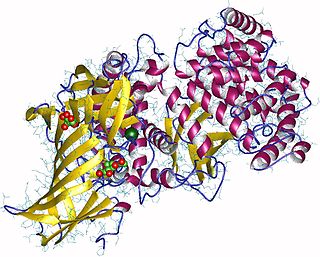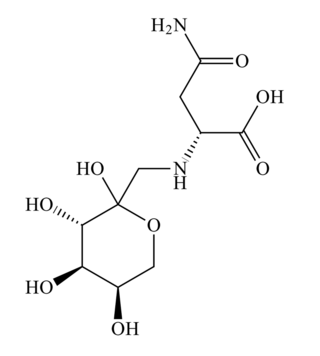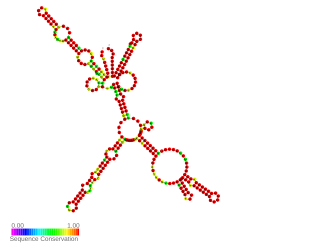Related Research Articles

Salmonella is a genus of rod-shaped (bacillus) gram-negative bacteria of the family Enterobacteriaceae. The two known species of Salmonella are Salmonella enterica and Salmonella bongori. S. enterica is the type species and is further divided into six subspecies that include over 2,600 serotypes. Salmonella was named after Daniel Elmer Salmon (1850–1914), an American veterinary surgeon.

Salmonella enterica is a rod-headed, flagellate, facultative anaerobic, Gram-negative bacterium and a species of the genus Salmonella. A number of its serovars are serious human pathogens; many of them are serovars of Salmonella enterica subsp. enterica.

Nalidixic acid is the first of the synthetic quinolone antibiotics.
XAA may refer to:
Xynotyri is an unpasteurized whey cheese from Greece made from sheep's milk or goat's milk, with a hard and flaky consistency, a pungent aroma and a yogurt-like sweet and sour taste. "Xynotyri" means "sour cheese" in Greek. Traditionally, the cheese is drained and cured in reed baskets or allowed to mature in bags made of animal skin. Cow's milk is not utilized in the production.

Polymyxin B, sold under the brand name Poly-Rx among others, is an antibiotic used to treat meningitis, pneumonia, sepsis, and urinary tract infections. While it is useful for many Gram negative infections, it is not useful for Gram positive infections. It can be given by injection into a vein, muscle, or cerebrospinal fluid or inhaled. The injectable form is generally only used if other options are not available. It is also available as the combinations bacitracin/polymyxin B and neomycin/polymyxin B/bacitracin for use on the skin.
The Kauffmann–White classification or Kauffmann and White classification scheme is a system that classifies the genus Salmonella into serotypes, based on surface antigens. It is named after Philip Bruce White and Fritz Kauffmann. First the "O" antigen type is determined based on oligosaccharides associated with lipopolysaccharide. Then the "H" antigen is determined based on flagellar proteins. Since Salmonella typically exhibit phase variation between two motile phenotypes, different "H" antigens may be expressed. Salmonella that can express only one "H" antigen phase consequently have motile and non-motile phenotypes and are termed monophasic, whilst isolates that lack any "H" antigen expression are termed non-motile. Pathogenic strains of Salmonella Typhi, Salmonella Paratyphi C, and Salmonella Dublin carry the capsular "Vi" antigen, which is a special subtype of the capsule's K antigen.

Aminopeptidases are enzymes that catalyze the cleavage of amino acids from the amino terminus (N-terminus) of proteins or peptides (exopeptidases). They are widely distributed throughout the animal and plant kingdoms and are found in many subcellular organelles, in cytosol, and as membrane components. Aminopeptidases are used in essential cellular functions. Many, but not all, of these peptidases are zinc metalloenzymes.
Glutamyl aminopeptidase (EC 3.4.11.7, aminopeptidase A, aspartate aminopeptidase, angiotensinase A, glutamyl peptidase, Ca2+-activated glutamate aminopeptidase, membrane aminopeptidase II, antigen BP-1/6C3 of mouse B lymphocytes, L-aspartate aminopeptidase, angiotensinase A2) is an enzyme encoded by the ENPEP gene. Glutamyl aminopeptidase has also recently been designated CD249 (cluster of differentiation 249).

Leucyl aminopeptidases are enzymes that preferentially catalyze the hydrolysis of leucine residues at the N-terminus of peptides and proteins. Other N-terminal residues can also be cleaved, however. LAPs have been found across superkingdoms. Identified LAPs include human LAP, bovine lens LAP, porcine LAP, Escherichia coli LAP, and the solanaceous-specific acidic LAP (LAP-A) in tomato.
Leucine responsive protein, or Lrp, is a global regulator protein, meaning that it regulates the biosynthesis of leucine, as well as the other branched-chain amino acids, valine and isoleucine. In bacteria, it is encoded by the lrp gene.

Salmonella enterica subsp. enterica is a subspecies of Salmonella enterica, the rod-shaped, flagellated, aerobic, Gram-negative bacterium. Many of the pathogenic serovars of the S. enterica species are in this subspecies, including that responsible for typhoid.
Dipeptidase E is an enzyme. This enzyme catalyses the following chemical reaction
Dipeptidyl-peptidase II is an enzyme. This enzyme catalyses the following chemical reaction:
Xaa-Pro dipeptidyl-peptidase (EC 3.4.14.11, X-prolyl dipeptidyl aminopeptidase, PepX, X-prolyl dipeptidyl peptidase is an enzyme. It catalyses the following chemical reaction
Xaa-Xaa-Pro tripeptidyl-peptidase is an enzyme. It catalyses the following chemical reaction

Fructose-asparagine (F-Asn) is a glycosylamine compound that is most notably used by Salmonella during Salmonella-mediated inflammation of the intestine. In addition to Salmonella, several other species of bacteria may utilize fructose-asparagine as a nutrient. The name of the genetic locus that encodes the uptake capability in Salmonella is fra. This fra locus has five genes: fraR, fraB a fructose-asparagine deglycase, fraD a sugar kinase, fraA a fructose-asparagine transporter, and fraE a L-asparaginase. Notably, mutations in fraB cause the buildup of the toxic intermediate 6-phosphofuctose-aspartate (6-P-F-Asp). The buildup of 6-P-F-Asp has a bacteriostatic effect on fraB mutant cells, making FraB a potential drug target.

The 3′ UTR of mRNA hilD, a master regulator of Salmonella pathogenicity island 1 (SPI-1), is a prokaryotic example of functional 3'UTR. The 3'UTR is a target for hilD mRNA degradation by the degradosome and it may play a role in hilD and SPI-1 expression by serving as a target for the Hfq RNA chaperone. Under non-invasive conditions it is necessary to keep low levels of SPI-1 expression. It plays a role in S. Typhimurium virulence as a regulatory motif.
Dipshikha Chakravortty is an Indian microbiologist, molecular pathologist and a professor at the department of Microbiology and Cell Biology at the Indian Institute of Science. Known for her studies on Salmonella and antibacterial resistance, Chakravortty is an elected fellow of the National Academy of Sciences, India, the Indian Academy of Sciences and the Indian National Science Academy. The Department of Biotechnology of the Government of India awarded her the National Bioscience Award for Career Development, one of the highest Indian science awards, for her contributions to biosciences, in 2010.

Some microorganisms, such as endophytes, penetrate and occupy the plant internal tissues, forming the endospheric microbiome. The arbuscular mycorrhizal and other endophytic fungi are the dominant colonizers of the endosphere. Bacteria, and to some degree archaea, are important members of endosphere communities. Some of these endophytic microbes interact with their host and provide obvious benefits to plants. Unlike the rhizosphere and the rhizoplane, the endospheres harbor highly specific microbial communities. The root endophytic community can be very distinct from that of the adjacent soil community. In general, diversity of the endophytic community is lower than the diversity of the microbial community outside the plant. The identity and diversity of the endophytic microbiome of above-and below-ground tissues may also differ within the plant.
References
- ↑ Mathew Z, Knox TM, Miller CG (June 2000). "Salmonella enterica serovar typhimurium peptidase B is a leucyl aminopeptidase with specificity for acidic amino acids". Journal of Bacteriology. 182 (12): 3383–93. doi:10.1128/jb.182.12.3383-3393.2000. PMC 101900 . PMID 10852868.